Brown Widow Spider Facts
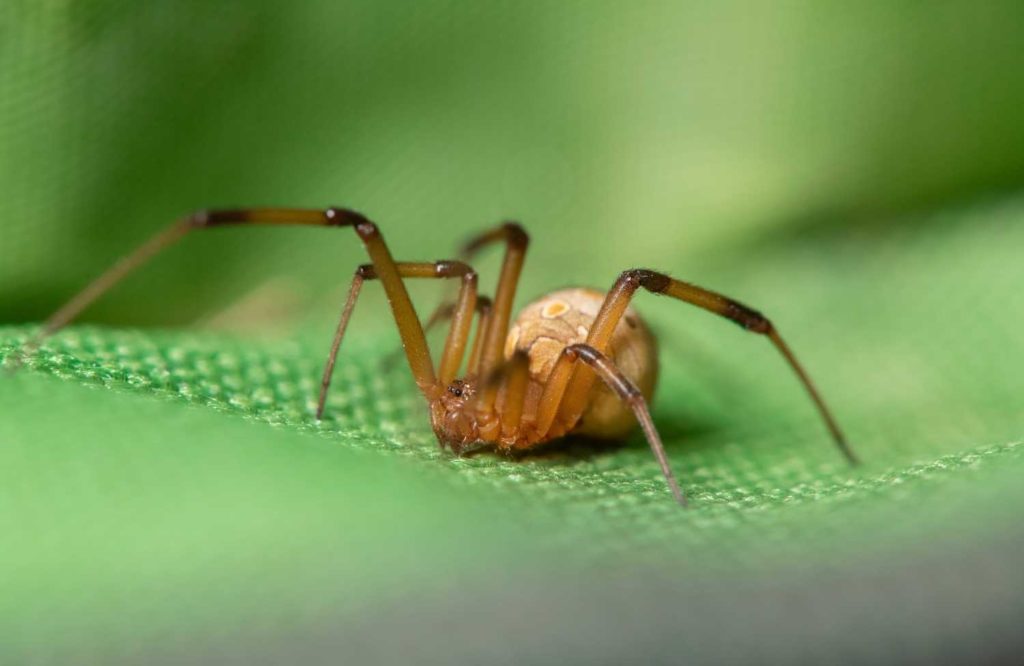
Most people would have heard of a spider called ‘The Black Widow’. It is a spider that is widely known for its painful bites. Bites that could cause a person to become very sick. As it stands, ‘Brown widow spiders’ are immediate cousins to the infamous ‘black widow’. The brown widow spider has many names.
Some known names are ‘brown button spider’, ‘geometric button spider,’ and ‘brown widow’.
What does a Brown Widow Spider look like?
The brown widow spider is lighter in color than the black widow. Their color ranges from dark brown to black. Its tan shaded body consists of a combination of white stripes. They have black and white patterns on the sides. Their abdomens are orangish-yellow in color and look like an hourglass. Their long legs also have a striped pattern.
People often mistake brown widow spiders with black widows. It is often difficult to differentiate between the two. To identify them, we have to examine the specimens.
Brown Widow Spider Size
Brown widows are not as big as black widow spiders. Females of the species are larger than males. They grow up to half an inch. Males grow only around 2-4mm.
Male and Female Brown Widow Spiders
Female spiders have a variable pattern. Their colors range from almost white to almost black color. Fine silky hair strands cover their abdomens. Female spiders can become 3 times the size of a male spider. Male spiders are tiny and do not bite. Females molt 6-9 times while males around 3-6 times before reaching maturity. On average, males take 37 days, and females take 96 days to reach maturity.
What family do they belong to?
Brown widow spiders belong to the family ‘Theridiidae’. They are part of the genus ‘Latrodectus’. Their scientific name is ‘Latrodectus geometricus’. On the other hand, black widows are known as ‘Latrodectus mactans’.
Where do you find Brown Widow Spiders?
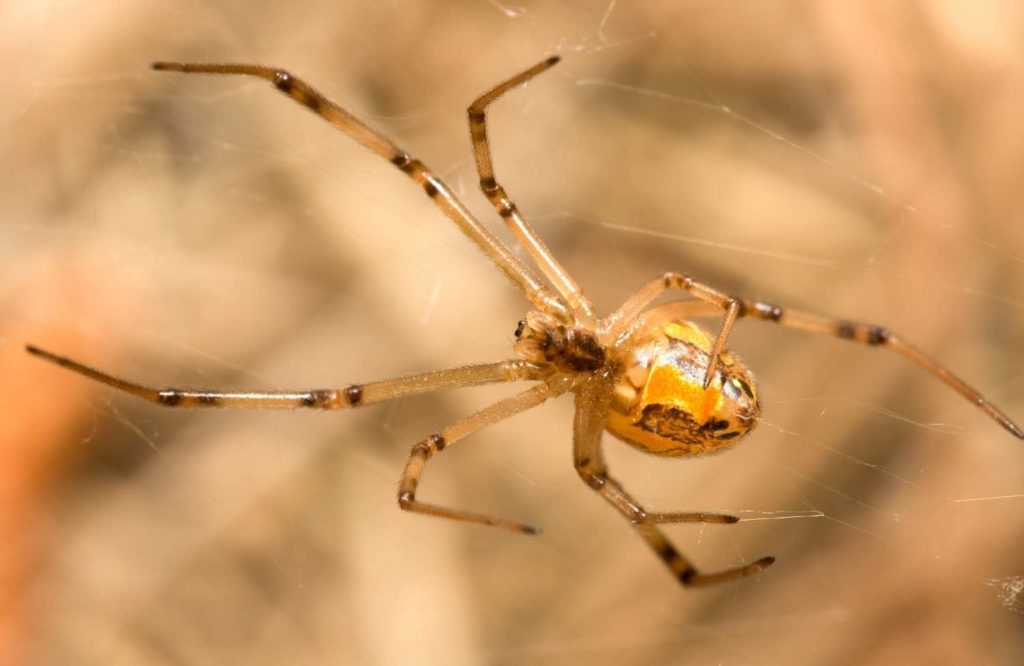
We can find brown widow spiders all around the world. People believe that they originated from Africa. Yet, they were first identified in South America. This spider is a tropical and subtropical spider. They are found in large numbers in South Africa, Japan, parts of Australia, and Cyprus. Towards the west, they are found in Hawaii, some of the Caribbean islands, and Florida. They are also widespread on the American continent.
Typical Habitat
Brown widow spiders build their webs in secluded and protected sites. These could be in abandoned places or trees with many branches. They make webs in empty containers, closets, buckets, furniture, garbage cans, and vehicles. They are also found in hollow trees, gaps in walls, and rock debris.
These places are more prone to being exposed. As a result, these sites pose higher risks of interactions with humans. Black widows, on the other hand, choose locations that are less prone to risks. Hence their exposure is less. They are also less in harm’s way.
What do Brown Widow Spiders Eat?
Brown widows live near human settlements. They eat common insects that you usually see. These may include mosquitoes, flies, crickets, bugs, ants, and roaches. In the end, they do help us rid our houses of insects.
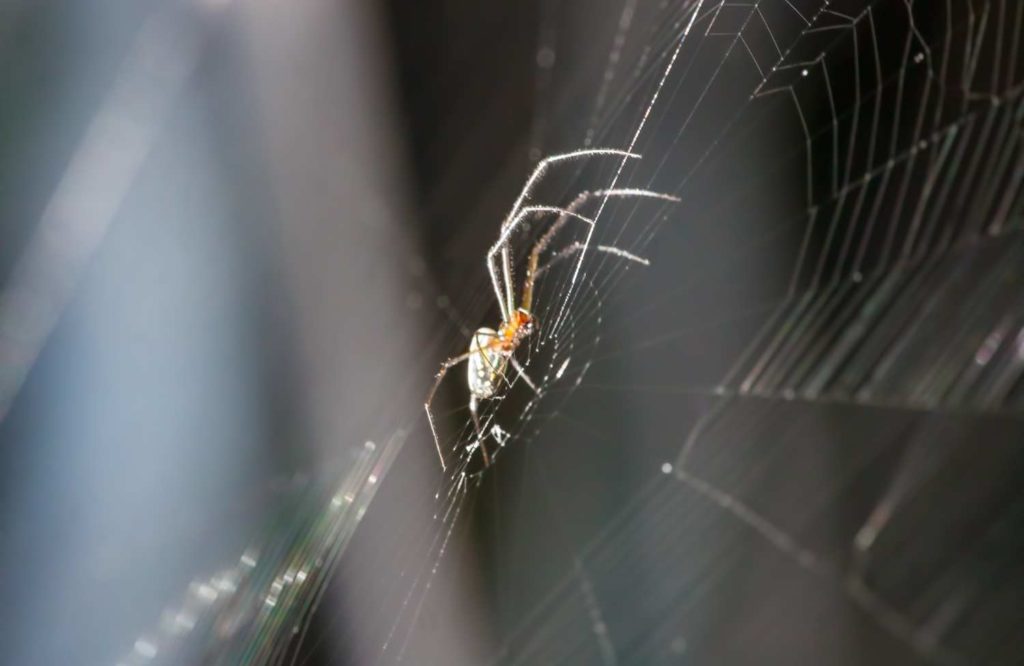
How long do Brown Widow spiders live?
The lifespan of a brown widow spider is around one to two years. They can sometimes live to 3 years. Males live for an average of 108 days. Females can live up to 519 on average.
How do Brown Widow Spiders Reproduce?
A male spider tries to attract the female spider by plucking and vibrating the female’s web. In most of the widow spider species, the female usually doesn’t kill her mate. It is not the case with brown widow spiders.
After mating, the male brown widow then somersaults. He positions himself such that the female can choose whether to attack him or not. In most cases, the female kills and eats the male. Eating the male provides the female and the eggs with the necessary nutrients they may need. It often decides whether the mating was successful or not.
Brown Widow Egg Sac
Brown widow females lay their eggs in sacs known as egg sacs. Females can mate repeatedly. Thus, they can produce many sacs in a lifetime. They grow around 20 sacs in a lifetime. Each sac contains 120-150 eggs.
Brown widow spiders produce unique egg sacs. They are the easiest way to distinguish between black and brown widow spiders. Brown widow spiders have round and yellowish egg sacs. These egg sacs contain pointy silk spikes sticking from their surfaces. Black widow egg sacs are different. They are either round or pointed on the top. Their texture is smooth, and they are yellow.
Baby Brown Widow Spider
The eggs hatch within 14-21 days of laying. After hatching, the spiderlings remain within the egg sac for a few days. They sometimes stay for a month. The hatchlings are pale and colorless. They slowly molt and develop patterns.
After emerging from the sac, hatchlings stay within that area for a while. This leads to cannibalism. Some may have a better survival rate. Others are not so fortunate. They end up as food for the surviving spiders. The remaining spiders disperse with time.
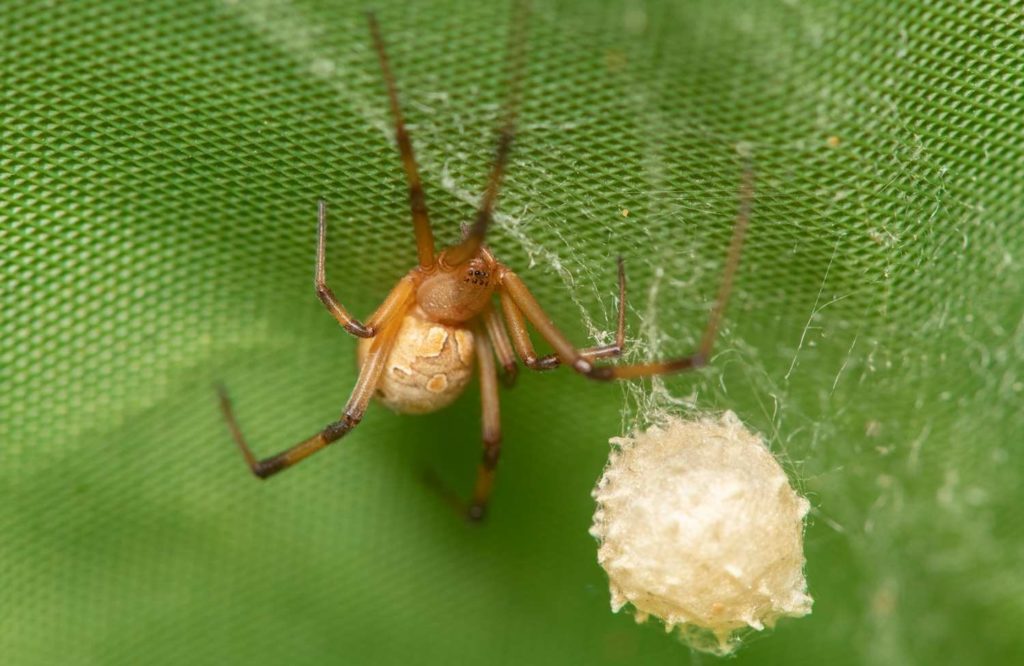
Predators of Brown Widow Spiders
Brown widow spiders have a widespread population. Due to this fact, they are prey for many predators. They are commonly preyed upon by different types of wasps. These include mud daubers and digger wasps. Birds and lizards also prey on them.
Behavior and Characteristics
Building webs near human settlements does not necessarily mean that they interact much with humans. When left alone, they are non-aggressive. They prefer places near the ground as well as areas that are dark and undisturbed. They are more aggressive towards black widows, though.
Brown Widow Spider Web
Webs of brown widows are irregular in shape. They spin webs from the tip of their abdomens. These webs are sticky and help capture prey. After their game gets captured and entangled, the spider immobilizes it. It uses capture threats that are sticky and bind the prey. After binding the prey, the spider injects venom into it.
Brown Widow Spider Bite
Most bites are caused due to pinching, squeezing, or harming the spider. These spiders use biting as a defense. They bite and become aggressive when threatened or when they are protecting their eggs.
Are Brown Widow Spiders Venomous?
Yes! Brown widow spiders are venomous.
Their bites often go unnoticed. This is because its bite is somewhat painless. You may ignore it until symptoms show up. The effect of the bite varies. It can be like a normal spider bite or may require hospitalization.
The bite of a brown widow is not as deadly as a black widow’s. This may be because they do not contain as much venom as a black widow.
Are they an Invasive Species?
Brown widow spiders are invasive. They do not physically attack. They just come into an area and occupy it. They are not native to the United States. However, they’ve spread rapidly in recent decades.
Black and brown widows occupy the same regions. This led to a shift in species inhabiting certain areas. When the brown widows occupy a particular part, black widows cannot establish themselves.
How to deal with an Infestation of Brown Widow Spiders?
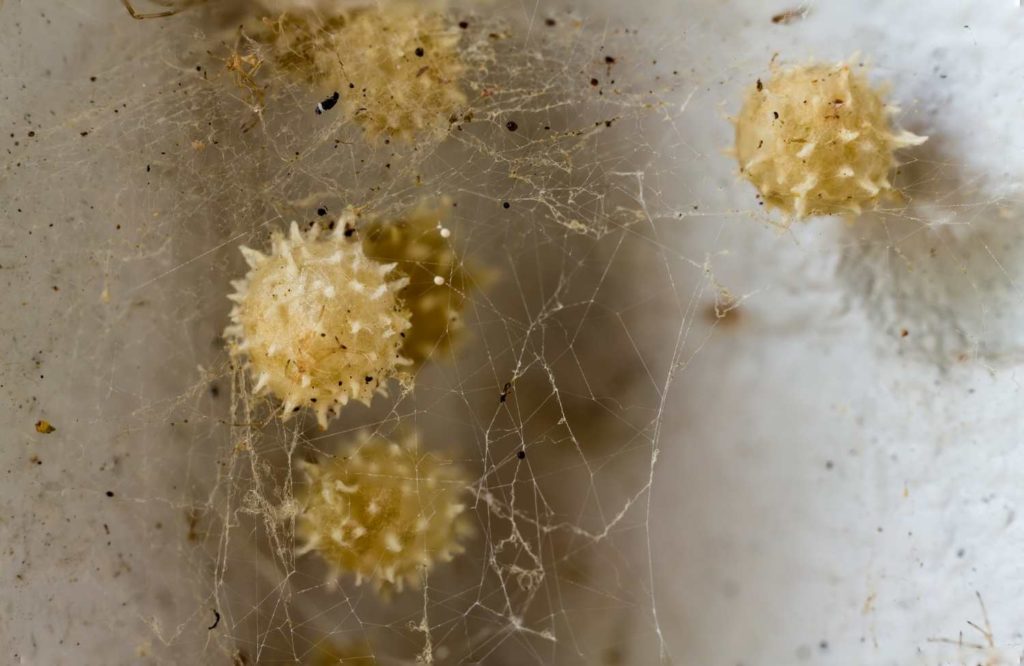
There is no specific way to deal with the infestation of brown widow spiders. The best available method is to use the same means as we use for insects in general. Most commercial sprays work on spiders. Block or spray up in holes. Reduce the waste lying around in your houses. Keep garage items in zip bags. These means can help deal with the problem of infestation.
Amazing Facts About Brown Widow Spiders
- The genus name Latrodectus is a Greek word meaning ‘biting in secret’.
- The webs and threads of brown widow spiders are sticky and irregular. So much so that they are referred to as ‘cobwebs’.
- These spiders use their threads to float and disperse.
